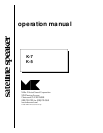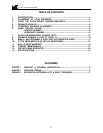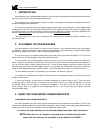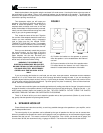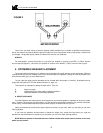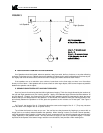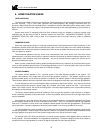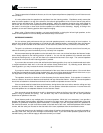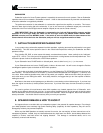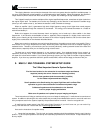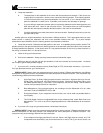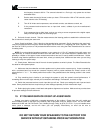
This clipping distortion occurs when the demands of the music are greater than the amplifier's available power. It
can occur at 20 watts with a small amplifier, or at 200 watts with a large amplifier. When this happens, the amplifier's
output waveform (which should look like a smooth arc) is "clipped" off, exhibiting a flat top instead of the arc.
This "clipped" waveform contains multiples of the original amplified frequencies, sometimes at higher levels than
the original signal itself. For tweeters, this can be very damaging, as this distortion is well above the audible range
(where you are unable to hear it), and where the tweeter is most vulnerable to damage.
When an amplifier "clips", it generates a high level of high frequency energy (much higher than normal program
material) which passes through the crossover to the tweeter. This energy can overheat the tweeter in a matter of
seconds and destroy it.
Before this happens, the sound becomes harsh and grating, and a break-up is often audible in the bass
frequencies. It will become uncomfortable to listen to, especially when compared to a slightly lower volume level.
When you are listening at high volume levels, be aware of the onset of clipping distortion, and turn the volume down
slightly if the sound takes on the character described above.
When tone controls or equalizers are used to boost frequencies, the problem occurs much more rapidly. Even a
small boost of low or high frequencies can easily double the power requirement and lead to amplifier clipping at
moderate levels. Therefore, you should use your tone controls judiciously, avoiding extreme boosts of the bass and
treble controls, especially when you are listening at high volume levels.
The best way to avoid speaker damage is to use common sense. Use moderate boosts of tone controls or
equalizers, at the very most. Listen carefully for any harshness and break-up, especially at high volume levels, and
turn down the volume when needed. If you cannot get enough volume, you may need to consider a higher-powered
amplifier. If you have any questions about this, please contact M&K, and we will be happy to discuss it with you.
9. M&K 5.1 MULTICHANNEL SYSTEM SETUP GUIDE
The 5 Most Important Items In System Setup:
Find the best location for the subwoofer for maximum output and flattest
response (usually the corner closest to the listening position)
Aim the front speakers (and the surrounds, if possible)
for the flattest response and best imaging
Set all speakers to the Small setting for proper High-Pass and Low-Pass Filter
operation to get the lowest distortion and maximum dynamic range
Calibrate all speakers and the subwoofer to the identical
level for proper imaging and balance
Make sure all speakers are in phase for proper imaging and impact
These instructions will help you make sure that you cover all steps in setting up a 5.1 multichannel surround sound
system. In addition to following this list, make certain that you study and understand the owner’s manual for each and
every component used in the system, especially the processor/receiver’s manual. Have fun and good luck!
A useful tool for system setup is the DVD called Video Essentials. If you don’t have one, you can order it by
calling 1-561-997-9073 or visit the web site at www.imagingscience.com.
Here are the instructions for speaker setup.
1. Locate the front speakers. The left, right, and center speakers should be equidistant from the main listening
position. Try to set up the speakers so that they are reasonably symmetrical to room surfaces. A tape measure may
be very helpful.
11
K-5/K-7 SATELLITESPEAKER



